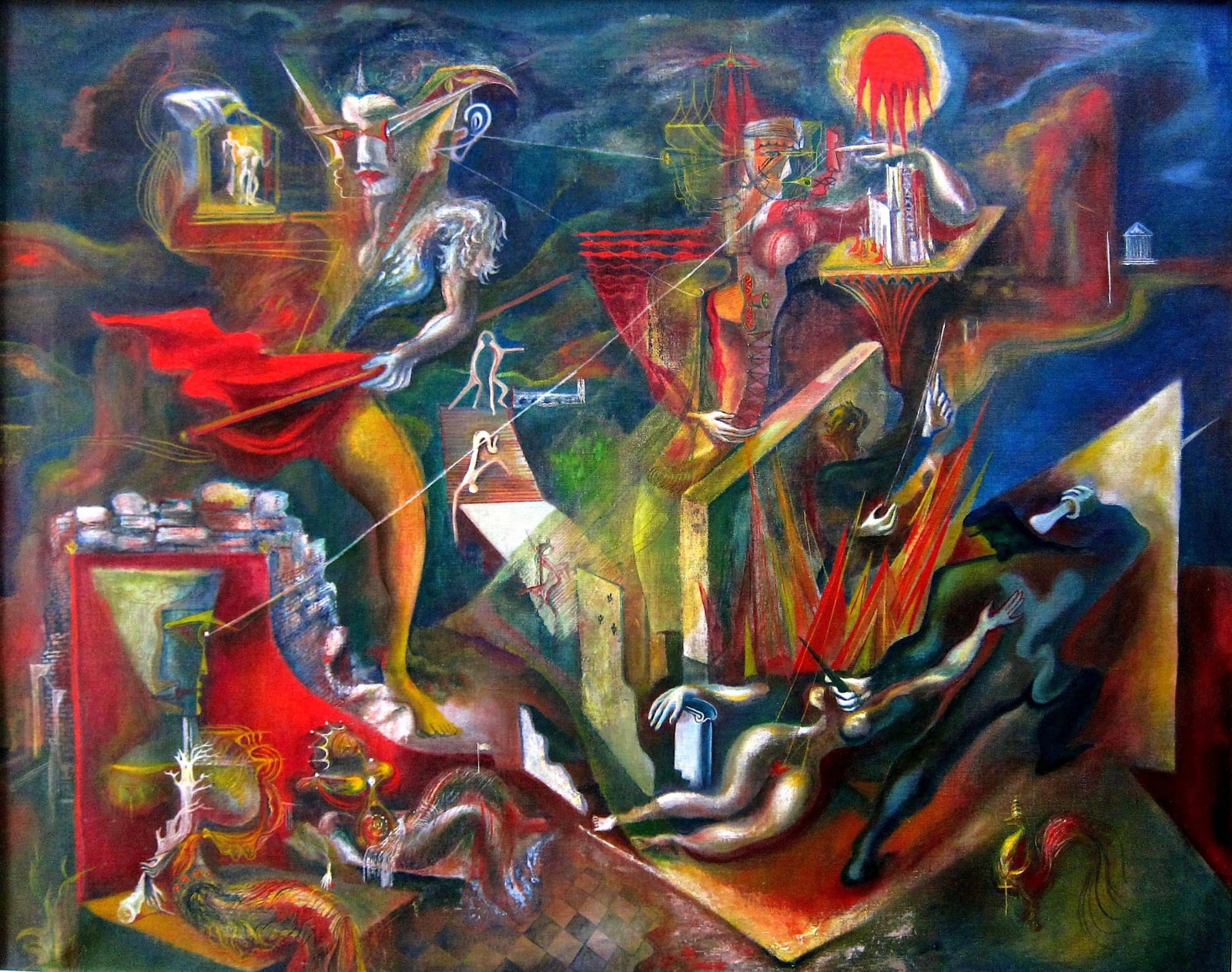
Leslie Hurry (1909-1978)
Leslie Hurry was born in London. He enrolled in the St John's School of Art in 1925, before winning a five-year scholarship to the Royal Academy, where he studied alongside his close friend, Mervyn Peake (1911-1968). Hurry held his first one-man show at the influential Wertheim Gallery in 1937. In 1940-41 - the period in which this work was painted - Hurry produced two books of intricate automatic drawings that were exhibited at the Redfern Gallery, leading to his acclaim as an 'ultra-surrealist'.
Hurry's emergence as an artist came at a time of hiatus with the British Surrealists, and so he never became an official member of the group. But while he worked in detachment from organised surrealism, his qualifications as a Surrealist are all too clear, with David Mellor instead referring to his work as 'psycho dramas'.
June should be regarded as one of Hurry's most significant works. Stylistically, it bears comparison with This Extraordinary Year, 1945, from the Tate Collection, with its eerie flaccidity and David Jones-like looseness of the figures. However, June is an altogether more ambitious composition, and in the introduction to his book, Paintings by Leslie Hurry, Jack Lindsay comments on the picture: "Out of the space of jangling wires and fettered ghosts there emerge monstrous forms, in which geometric and organic elements uncertainly struggled."
Provenance
The Artist's nephew, John Hurry Armstrong; Private collection, Yorkshire
Exhibitions
Exhibited: A Paradise Lost: The Neo-Romantic Imagination in Britain 1935 - 55, Barbican Art Gallery, 27 May - 19 July 1987
Literature
Literature: Lindsay, J., Paintings and Drawings by Leslie Hurry, London, The Grey Walls Press, 1950; Mellor, D., A Paradise Lost: The Neo-Romantic Imagination in Britain 1935 – 55, London, Lund Humphries, 1993